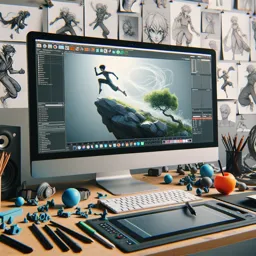Introduction
Video animation is a captivating art form that brings life to static images, turning ideas into dynamic visual narratives. Whether in films, television, video games, or online content, animations play a crucial role in storytelling and audience engagement.
The Basics of Video Animation
At its core, animation is about creating the illusion of movement through a series of still images. These images are played in a rapid sequence, typically at 24 or 30 frames per second, to produce a seamless motion that is pleasing to the human eye.
Types of Video Animation
There are various types of video animation, each with its own unique style and technique:
- 2D Animation: This traditional form is often drawn by hand or created using digital tools. It’s known for its flat, two-dimensional nature and is commonly used in cartoons and explainer videos.
- 3D Animation: Unlike 2D, 3D animation utilizes depth and volume, bringing characters and environments to life. It’s widely used in movies and video games due to its realistic appeal.
- Motion Graphics: Primarily focused on text and simple graphics, motion graphics present information dynamically, making it ideal for corporate videos and presentations.
- Stop Motion: This unique technique involves physically manipulating objects in small increments between individually photographed frames, creating an organic and tactile animation.
The Creative Process
The process of creating video animations involves several stages:
- Concept Development: Starts with brainstorming ideas and developing a storyline or concept that sets the foundation for the animation.
- Scripting and Storyboarding: Translating the concept into a written script and visual storyboard. This step outlines the sequence of events and key moments.
- Design and Modeling: Creating characters, backgrounds, and assets either in 2D or 3D, depending on the animation style.
- Animation: The core of the process where characters and elements are brought to life using specialized software.
- Post-Production: Final touches such as editing, adding sound effects and voiceovers, and rendering the completed work.
Applications of Video Animation
Video animation is versatile and finds applications across various industries:
- Entertainment: Feature films, series, and video games utilize animation for high-quality storytelling.
- Marketing: Brands use animation for advertisements and social media content to capture viewer attention.
- Education: Animated videos simplify complex subjects, making learning engaging and effective.
- User Interface Design: Animations enhance user experience in software applications and websites.
Conclusion
Video animation is an ever-evolving art form, blending creativity with technology to transform ideas into engaging visual experiences. As tools and techniques advance, the scope for what can be achieved through animation continues to expand, offering endless possibilities to storytellers and creators.

















